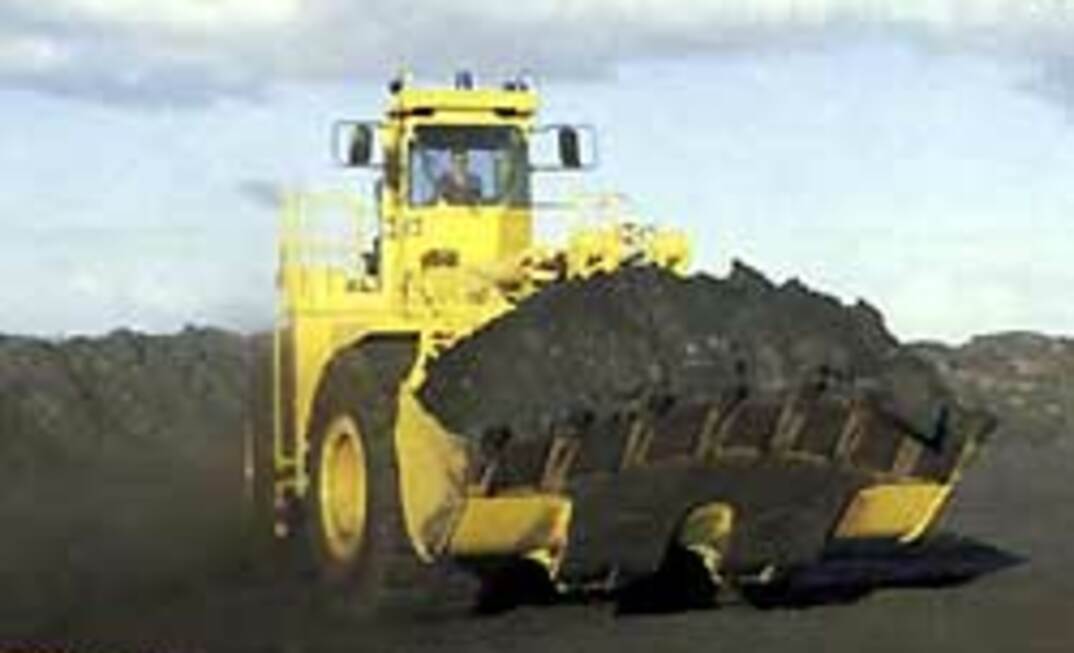Published in March 2010 Australian Longwall Magazine
Shuttle car designs vary but most share the same safety issues as operators are forced to steer differently depending on whether they are travelling inbye or outbye.
With the north-south dual seat configuration of shuttle cars used commonly in Australia, the operator must also change seats before heading off in the opposite direction.
Kings eliminated these issues entirely with the development of the Ergopod for its Kings Koal Hauler, where the entire steering wheel and seat can rotate 180 degrees to suit the direction of travel.
The patented Ergopod system is cleverly designed to enable the operator to use the steering-wheel function to rotate the seat and console through 180 degrees, enabling the operator to change direction without having to remove his seatbelt.
Kings business systems manager Adrian Kuchta said the Ergopod was designed for driver safety and comfort, and reduced the risk of injury caused by twisting the neck and body to look in the reverse direction, or from moving within the cab itself.
The design also caught the attention of ergonomist Robin Burgess-Limerick, who will update his acclaimed 2005 ACARP project, Reducing Injury Risks Associated with Underground Coal Mining Equipment, around mid-year. He considered the Ergopod a possible solution to safety issues raised at the coronial inquest into the death of Jason Blee, who was crushed between a shuttle car and the rib at a bord and pillar section of Moranbah North in 2007.
Centennial Coal’s Clarence operation recently purchased three Ergopod shuttle cars and, while there were some initial concerns, operators have since embraced the Ergopod design.
“Young guys generally accept it quicker than the older guys who are more familiar with the traditional shuttle car steering system, but after driving it for a while, the old guys tend to accept the design,” Kings product development manager Mark Chapman said.
While seven Ergopod machines are now in operation, the first two Koal Haulers commenced operation at Centennial’s Mannering mine back in 2005. The Koal Hauler design includes a bolt-on driver’s cabin that also allows for traditional north-south or east-west seating configurations to be retrofitted to the standard chassis design, depending on the customer’s requirements.
“The customer can specify he wants a standard north-south seating configuration, and in 12 months time he can say ‘I want to put an Ergopod on the machine’, so it’s only a matter of unbolting the original driver’s cab and rebolting the Ergopod with minimal changes,” Kings general manager Kerry Smith said.
Assembled at Kings’ Rutherford facility in the Hunter Valley, the Koal Haulers can be made in low height or standard height, and with different conveyor widths. The vehicles can incorporate rubber inserts for the tyres to increase the payload capacity while complying with applicable mining design guidelines.
Kings aims to carve out a small niche in the shuttle car market and Smith recalls his successful pitch to company directors when the first machine was under development.
“Let’s not try to be the biggest manufacturer of shuttle cars, let’s be the manufacturer of the best shuttle cars,” he said.
“So far, to date, we have achieved that. We have machines that have been in service for over four years that have provided the operator excellent reliability and performance.”
Aside from Clarence and Mannering, the Koal Haulers are in operation at Metropolitan, Chain Valley and Cook, and will soon be at Charbon collieries. The company has also retrofitted the Ergopod to older-style shuttle cars operating successfully at Berrima colliery.
Kings will test its own design variable speed AC traction drive system (VSD) for the Koal Hauler in mid-April with the aim of making it available to the market place in the latter part of 2010. This system will help open up export opportunities for the company.
Kings was forced to decline tender invitations from the likes of China Shenhua Energy back in 2007 because its shuttle car did not have a VSD at the time, but Smith said the company still had a foot in the door. The company is also undertaking feasibility studies on manufacturing Kings Koal Haulers, sometimes referred to as “Koala cars”, completely in-house.
“Our aim to is to make it a full Australia-made product,” Smith said. “By utilising modern technologies in the design and manufacturing process we believe we can achieve the aim of building a locally designed and manufactured machine at a competitive price.”
Kuchta said customers would be looking at a car with an Ergopod, a VSD drive and Kings’ own designed and developed chassis made to quality standards in the latter half of 2010.
Kings has designed its shuttle car for easy maintenance, and the machine comes standard with an automatic lubrication system for moving parts. With just over 90 employees at its Rutherford and Lithgow workshops, Kings employs about 60 skilled fitters, boilermakers, machinists and apprentices, and has a steady line of business in mining equipment overhauls, parts supply and service covering New South Wales and Queensland mines.
Family-owned Kings was founded in 1923 and also serves the aluminium, rail, agriculture and general engineering industries.
























